Mushrooms, the fruiting bodies of fungi, offer diverse benefits from culinary delights to health boosts. Michigan boasts a rich array of edible mushrooms waiting to be discovered in its varied landscapes. Whether you’re a seasoned forager or an intrigued food enthusiast, Michigan’s natural bounty offers a delightful adventure.
Michigan’s lush environment nurtures a diverse range of mushrooms, making it a haven for foragers and food lovers alike. From forests to fields, parks to gardens, these fungi thrive in the state’s favorable climate, adding depth to its culinary culture.
Edible mushrooms, rich in nutrition and flavor, contribute to both culinary and medicinal realms. Packed with protein, fiber, vitamins, and minerals, they offer a plethora of health benefits. However, distinguishing them from poisonous or inedible varieties is crucial for safe foraging and consumption.
Michigan’s conducive climate and rich history have fostered a deep-rooted appreciation for mushrooms. From Native American traditions to modern-day enthusiasts, the state’s mushroom culture continues to flourish. Its thriving mushroom industry further amplifies its significance in local and national markets.
This guide aims to provide a concise overview of identifying, harvesting, preparing, and safely enjoying Edible Mushrooms In Michigan. While not exhaustive, it serves as a starting point for your exploration.
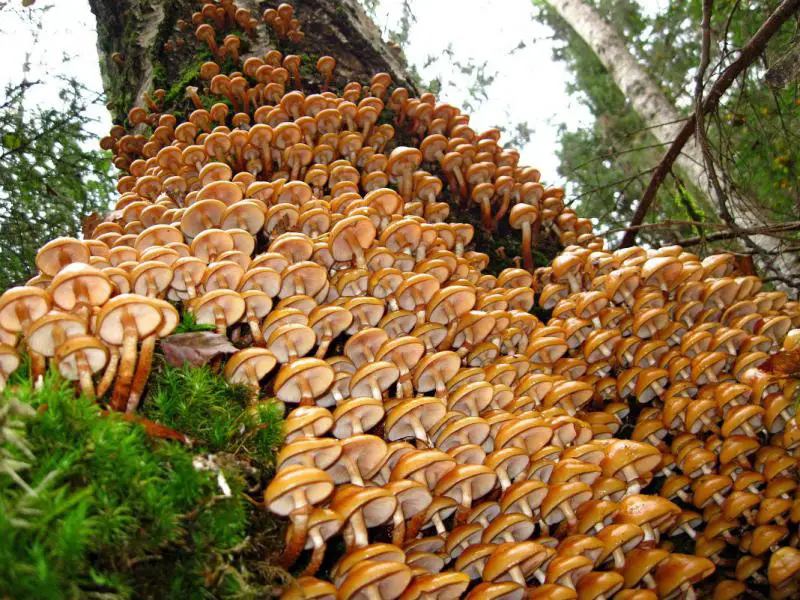
Edible Mushrooms in Michigan: Types and Harvesting Guide
Types of Edible Mushrooms in Michigan
There are hundreds of species of edible mushrooms that can be found in Michigan, belonging to various groups and categories based on their appearance, habitat, season, and flavor. In this section, we will introduce some of the main categories and examples of edible mushrooms that you can encounter in the state, along with some images and tips for identification. However, keep in mind that this is not an exhaustive list, and that there may be variations and exceptions within each category. Therefore, always use multiple sources and methods to confirm the identity of any mushroom you find, and never eat anything you are not sure about.
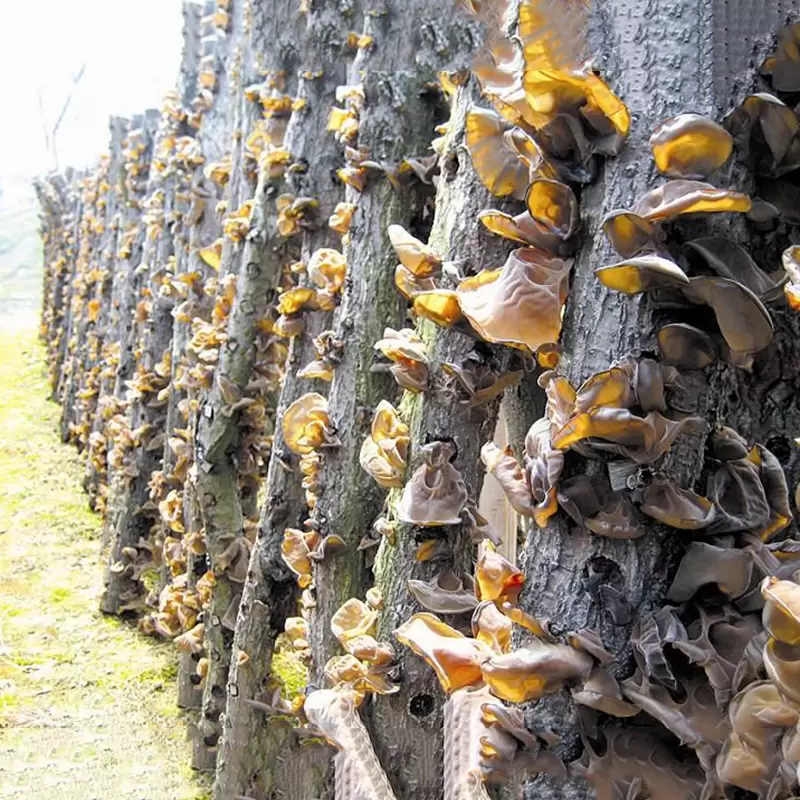
Gilled Mushrooms
Gilled mushrooms, characterized by thin, blade-like structures under their caps, comprise the most diverse and common group of edible fungi. They vary in shapes, sizes, colors, and patterns, and can be found in different habitats and seasons. Here are some notable examples:
- Chanterelles: Golden-yellow with trumpet-shaped caps and wavy edges, these mushrooms grow in clusters near hardwood trees like oaks during summer to fall. Their fruity, peppery flavor makes them ideal for soups, sauces, and pastas.
- Morels: Brown and cone-shaped with a honeycomb-like texture, morels thrive near dead or dying trees such as elms and maples from spring to early summer. Their nutty, earthy taste pairs well with frying, stuffing, or adding to stews and casseroles.
- Oyster Mushrooms: Available year-round on dead or dying hardwood trees like beeches and birches, oyster mushrooms boast fan-shaped caps and smooth surfaces. Their mild, sweet flavor complements sautéing, roasting, or adding to stir-fries and soups.
- Portobellos: Large and brown with umbrella-shaped caps and thick stems, portobellos grow in rings or groups near grasses and compost during late summer to fall. Known for their meaty, savory taste, they are often grilled, baked, or used as burger substitutes.
Do you want to know Are Mushrooms Legal In Texas?
Boletes
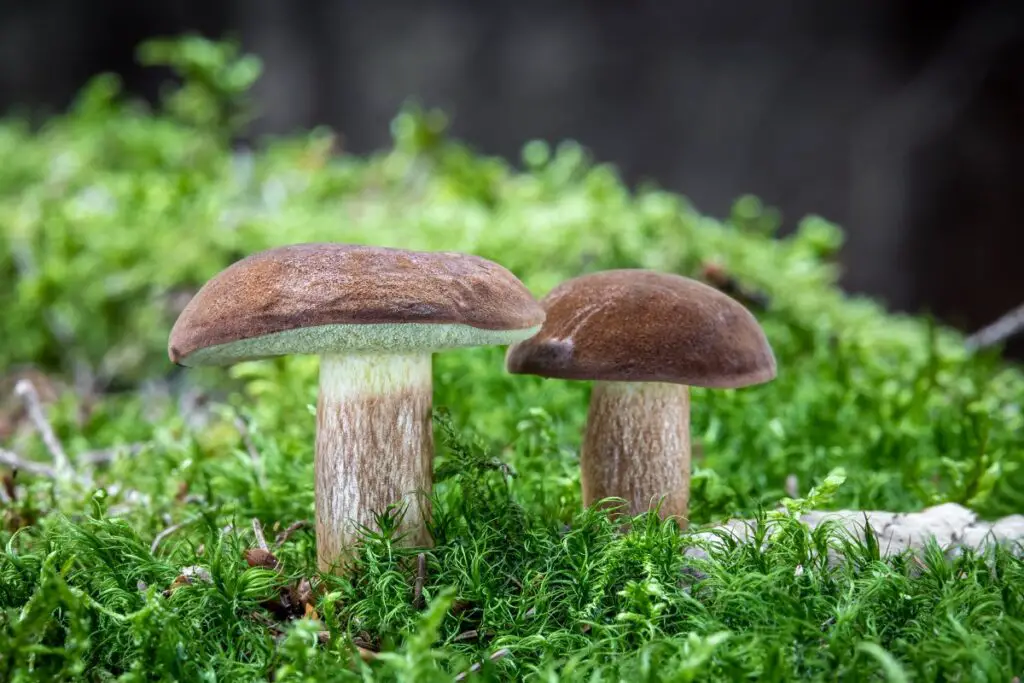
Boletes Edible Mushrooms in Michigan, distinguished by their pore-filled undersides, constitute another substantial category of edible mushrooms. These mushrooms, featuring thick, fleshy caps and stems, come in various colors and sizes and form symbiotic relationships with trees. Here are some notable examples:
- Porcini: Brown with a smooth cap and thick, white stem, porcini mushrooms boast a nutty, woodsy flavor. Often dried or sliced, they enhance soups, sauces, and risottos. Look for them near coniferous or deciduous trees, particularly pines, from summer to fall.
- King Boletes: Resembling porcini but larger and darker, king boletes sport a reddish-brown cap and yellowish stem. Their rich, buttery taste makes them ideal for sautéing, roasting, or adding to pasta and pizza. They typically grow near coniferous or deciduous trees, especially pines and oaks, from summer to fall.
- Slippery Jacks: Yellowish-brown with a slimy cap and yellowish stem, slippery jacks have a mild, sour flavor. Often pickled or marinated, they’re great for soups and salads. Look for them near coniferous trees like pines and spruces from summer to fall.
Polypores
Polypores Edible Mushrooms in Michigan, also known as bracket fungi or shelf fungi, are wood-growing mushrooms characterized by their pore-filled undersides. These fungi often form shelf-like structures on trees or logs and come in various shapes, sizes, and colors. Here are some notable examples:
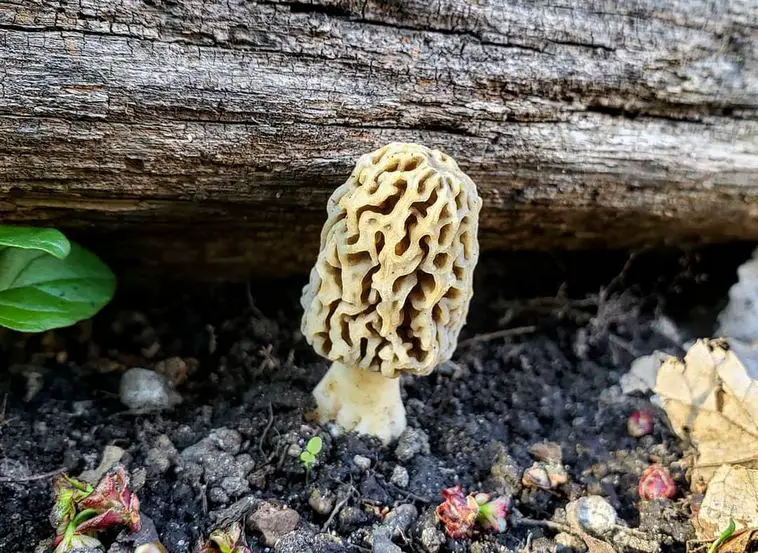
- Chicken of the Woods in Michigan: Bright orange, yellow, or pink with fan-shaped caps, these mushrooms lack stems and have a chicken-like flavor. Typically found in clusters on dead or dying hardwood trees like oaks and maples during summer to fall, they’re ideal for frying, baking, or adding to soups and stews.
- Hen of the Woods: Grayish-brown and rosette-shaped with frilly caps and short stems, hen of the woods mushrooms offer a nutty, earthy flavor. Growing in clusters at the base of hardwood trees, especially oaks, from late summer to fall, they’re perfect for sautéing, roasting, or adding to soups and stir-fries.
- Turkey Tail: Brown, gray, or multicolored with semicircular caps, turkey tail mushrooms feature velvety or hairy surfaces and thin stems. Often brewed as tea or extracted for their immune-boosting and anti-cancer properties, they grow in rows or tiers on dead or dying hardwood trees like birches and maples throughout the year.
If you want to learn more about how to look for morel mushrooms, you can check out this section of the article: How to Find Morels Mushroom. It provides some tips and guidelines on where and when to look for morels, as well as some resources to help you identify them. Morels are one of the most common and delicious edible mushrooms in Michigan, and they usually appear from late April through May. Happy hunting! 🍄
Other Edible Mushrooms in Michigan
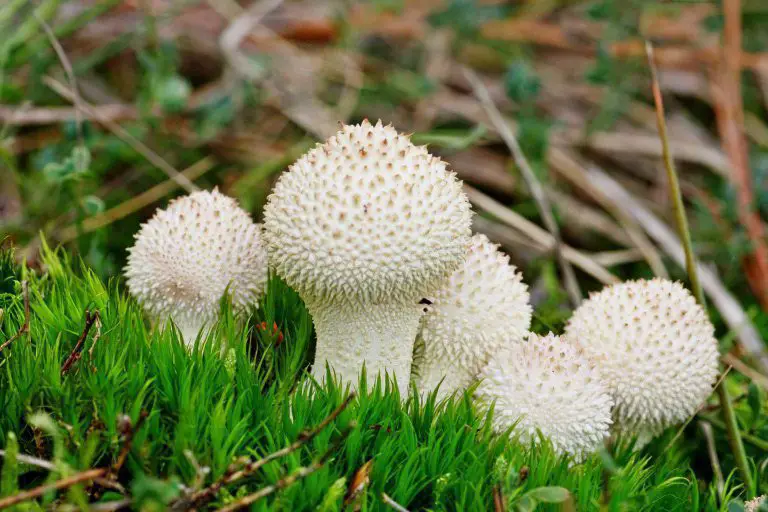
Other Edible Mushrooms in Michigan offer unique flavors and textures, standing apart from previous categories. Here are some noteworthy examples:
- Puffballs: White and round with a smooth or spiny surface and no stem, puffballs have a soft, spongy texture. Often found in groups or singly near grasses, wood chips, or compost during summer to fall, they’re perfect for slicing, frying, or baking.
- Truffles: Irregular-shaped and black, brown, or white with a rough, warty surface and a strong aroma, truffles boast a firm, crunchy texture. Growing underground near tree roots, especially oaks, hazels, and pines, from fall to winter, they’re commonly shaved, grated, or infused for soups, sauces, and dishes.
- Lion’s Mane: Globular and white, cream, or beige with long, thin, hair-like spines and no stem, lion’s mane mushrooms have a chewy, stringy texture. Often found in clusters on dead or dying hardwood trees like beeches, birches, and maples during late summer to fall, they’re great for sautéing, roasting, or adding to soups and stews.
Rare and Exotic Edible Mushrooms in Michigan
Michigan boasts some rare and exotic edible mushrooms that add a touch of adventure to any foraging expedition. Here’s a glimpse of the most intriguing varieties you might encounter:
- Matsutake: Also known as the pine mushroom or American truffle, this highly sought-after delicacy emerges in the fall. With its distinctive convex cap ranging from white to red and a robust, ringed stem, the Matsutake exudes a spicy, piney aroma. Often concealed beneath pine needles or moss in sandy soils, particularly under jack pine or red pine trees, this mushroom fetches a hefty price in markets, sometimes reaching hundreds of dollars per pound due to its rarity.
- Black Trumpet: The dark and elusive Black Trumpet makes its appearance in summer and fall, sporting a funnel-shaped cap in shades of black, gray, or brown atop a slender, hollow stem. Its smoky, earthy flavor lends itself well to soups, stews, and pasta dishes. Thriving in hardwood or mixed forests, particularly in mossy or leafy areas, the Black Trumpet camouflages itself amidst the forest floor, often mistaken for shadows or holes. Remarkably, it tends to grow in the same location year after year, making it a prized find for foragers.
- Candy Cap: Also referred to as curry milk cap or maple syrup mushroom, the Candy Cap delights foragers in fall and winter with its sweet, aromatic profile. Sporting a convex cap ranging from orange to red and a white or yellow stem, this mushroom boasts a flavor reminiscent of maple syrup, which intensifies upon drying. Often found in hardwood or coniferous forests under oak, pine, or fir trees, the Candy Cap forms groups or rings and can be identified by its milky sap turning yellow upon exposure to air. While rare among mushrooms for its ability to be consumed raw, it truly shines when incorporated into desserts like cookies, cakes, or ice cream.
These rare and exotic edible mushrooms offer a tantalizing glimpse into Michigan’s diverse fungal offerings, promising unforgettable culinary experiences for adventurous foragers.
Harvesting Edible Mushrooms in Michigan
Once you have learned about the types and identification of edible mushrooms in Michigan, you may be eager to go out and harvest some for yourself. However, before you do that, you need to know some practical advice on how to find, collect, and store edible mushrooms in Michigan. You also need to be aware of some of the legal and ethical aspects of foraging, and how to respect the rights and property of others. In this section, we will provide you with some useful tips and guidelines on how to harvest edible mushrooms in Michigan safely and responsibly.
Where to look for edible mushrooms in Michigan
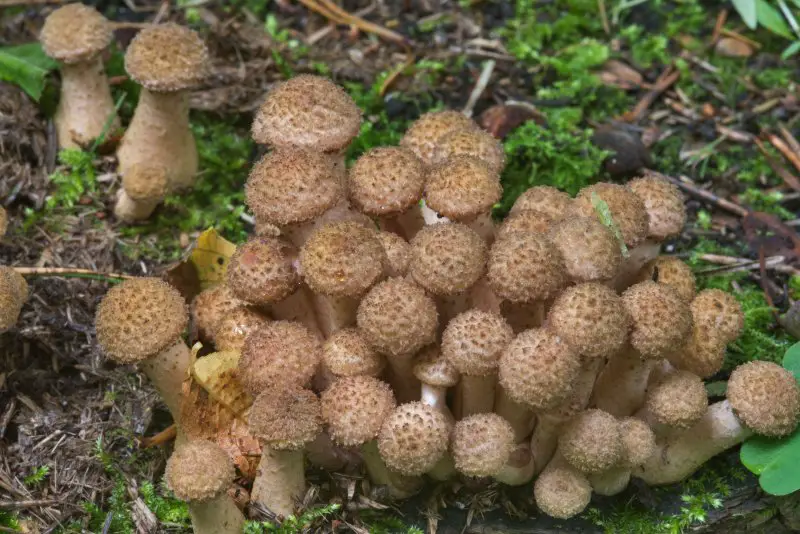
When seeking out edible mushrooms in Michigan, it’s crucial to know where and when to look. Mushroom hunting relies on a variety of factors such as weather, season, habitat, and competition, making adaptability key.
Some of the best places to look for edible mushrooms in Michigan are:
- Forests: With their abundance of shade, moisture, and organic matter, forests offer diverse habitats for mushrooms. Keep an eye on the ground, logs, stumps, branches, or leaves near different tree types like conifers, hardwoods, or mixed woods. Pay attention to soil quality, slope, and terrain aspect.
- Fields: These openareas, often cultivated or grazed, can yield mushrooms on the ground, dung, straw, or compost. Look along edges, borders, or patches of vegetation, steering clear of pesticide or herbicide-treated areas.
- Parks: Public or private recreational areas with lawns, gardens, or trails can harbor mushrooms on the ground, wood chips, mulch, or ornamental plants. Explore near trees, shrubs, flowers, or water features, adhering to park regulations.
- Gardens: Personal or communal growing spaces may yield mushrooms on the ground, compost, manure, or plant debris. Check around crops, herbs, or flowers, and always obtain permission before foraging in others’ gardens.
Learn how to pick mushrooms at the right time and place.
best times to look for edible mushrooms in Michigan
Some of the best times to look for edible mushrooms in Michigan are:
- After Rain: Rainfall provides crucial moisture for mushroom growth, prompting spore germination. Following a rain spell, particularly in warm, humid weather, expect increased mushroom activity. Be vigilant, as excessive rain can deteriorate or displace mushrooms, so aim to gather them before spoilage or animal consumption occurs.
- During Season: Mushrooms exhibit seasonal patterns dictated by life cycles and environmental factors. Consequently, various species thrive during specific times of the year and in distinct regions. For instance, spring heralds morel season, summer brings chanterelles, and fall yields porcini. However, certain mushrooms like oyster mushrooms and turkey tail may persist year-round.
- Early Morning: Morning offers prime conditions for mushroom hunting, as specimens remain fresh and undisturbed by sunlight, wind, or wildlife. The cool, dewy atmosphere of the morning enhances mushroom visibility. Keep in mind that some mushrooms may undergo changes in appearance or behavior throughout the day, so revisiting locations in the afternoon or evening can be fruitful.
How to collect edible mushrooms in Michigan
When collecting edible mushrooms in Michigan, it’s crucial to harvest, handle, and transport them properly to maintain quality and safety. Here are some practical tips and guidelines:
Some of the best tools and equipment to use for collecting edible mushrooms in Michigan are:
- Knife: Use a sharp, clean knife to cut mushrooms from their substrate, especially if they have tough stems or are attached to wood. Be cautious to avoid injuries.
- Basket: Carry mushrooms in a basket to allow air circulation and prevent crushing or bruising. Ensure the basket is light, spacious, and sturdy.
- Guidebook: Bring a reliable guidebook for identifying mushrooms, with descriptions, illustrations, and photographs. Remember not to rely solely on it for identification.
By following these tips, you can collect edible mushrooms in Michigan safely and responsibly while respecting the environment and others’ property.
Conclusion
Edible mushrooms offer a delightful journey that can enrich your life in myriad ways. From providing nourishing meals to fostering connections with nature and culture, these organisms hold immense value. Michigan, with its diverse habitats and seasons, offers a bountiful array of edible mushrooms to explore. However, responsible and informed engagement is crucial to fully appreciate and benefit from them.
We hope above you have find comprehensive overview of identifying, harvesting, preparing, and safely consuming edible mushrooms in Michigan. We hope it has sparked your curiosity and encouraged you to delve deeper into the fascinating world of fungi. While we couldn’t cover every aspect, such as scientific classifications or legal considerations, we encourage you to seek further knowledge from reputable sources.
FAQs
Q: What are some of the best resources for learning more about wild mushrooms in Michigan?
For those eager to delve into the world of wild mushrooms in Michigan, there are numerous valuable resources available. Consider joining esteemed mushroom clubs like the Michigan Mushroom Hunters Club or the Michigan Mycological Society for comprehensive education and assistance. Additionally, explore informative literature like the National Audubon Society Field Guide to North American Mushrooms or online platforms such as MushroomExpert.com. Engage with captivating multimedia content such as the Fantastic Fungi film or the Mushroom Hour podcast for immersive learning experiences.
Q: Where can I buy or sell wild mushrooms in Michigan?
In Michigan, there are diverse avenues for buying or selling wild mushrooms. Explore local farmers’ markets, specialty stores, or online platforms for purchasing. Engage with mushroom clubs for organized forays, swaps, or sales, or connect with buyers or brokers facilitating transactions with restaurants or retailers. Adhere strictly to Michigan’s regulations concerning harvesting, selling, and purchasing wild mushrooms, ensuring compliance with permits or licenses as needed.
Q: What are some of the most poisonous mushrooms in Michigan?
Michigan hosts several highly toxic mushrooms, including the death cap (Amanita phalloides), the destroying angel (Amanita virosa), the false morel (Gyromitra esculenta), and the jack-o-lantern (Omphalotus olearius). Mistaking these for edible varieties can lead to severe illness or even fatalities. Exercise extreme caution when handling mushrooms, and promptly seek medical help if poisoning is suspected.